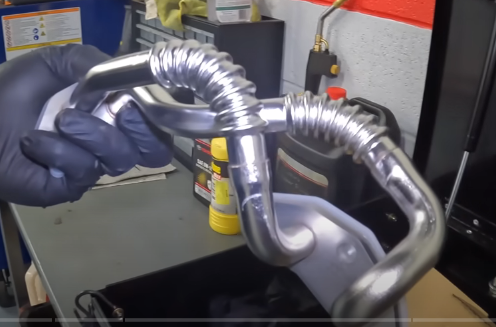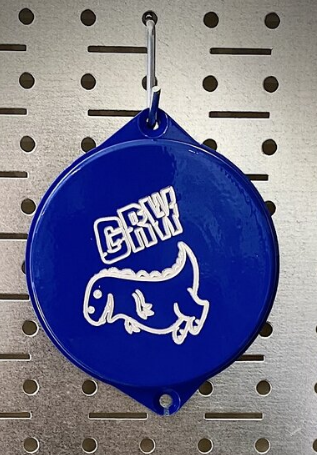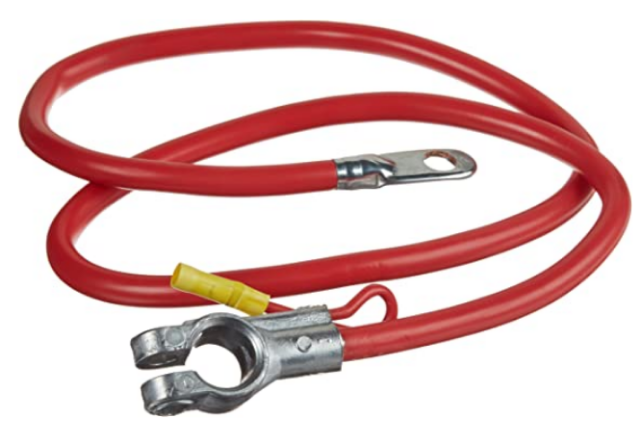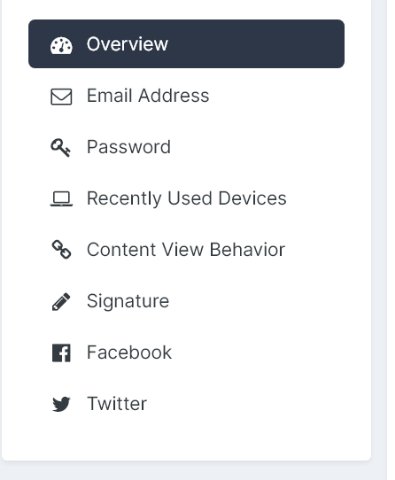
NewZed
Members-
Posts
6625 -
Joined
-
Last visited
-
Days Won
60
Content Type
Profiles
Forums
Blogs
Events
Gallery
Downloads
Store
Everything posted by NewZed
-
Turbos are so popular today that you can find them all over the place. Even OReilly Auto has an inexpensive Dorman line. The race shops have neat looking braided lines but the automakers use solid steel. https://www.oreillyauto.com/shop/b/fuel-delivery/turbocharger---supercharger/turbocharger-oil-line/37ad2bed2d4d Really though, if you have flaring tools you could just buy some steel tube and make your own. It's low pressure, a 45 degree flare should be fine. Good luck. https://www.oreillyauto.com/detail/c/dorman-oe-solutions/fuel-delivery/turbocharger---supercharger/turbocharger-oil-line/37ad2bed2d4d/dorman-oe-solutions-steel-turbo-oil-line/doe0/625813?pos=7
-
Didn't Nissan use a metal line?
-
The heat is on the inside. Seems like high temperature hydraulic fluid hose would be better. Can't think of any fuels that are meant to be transported at high temperature. No offense, it's just the wrong stuff for the application. Even a wrapped hose could just end up as an oil-soaked sponge next to the exhaust manifold and turbo.
-
-
Not an expert on these things but - I don't think that fuel hose is rated for the temperatures it might see from hot turbo oil. I've seen interesting steel flex lines. I just saw a video about Toyotas with rubber hoses, not even that close to the heat. They degrade over time. I'll see if I can find it and link it. Might have some ideas in it.
-
Because anybody can say anything on the internet. The answer is probably in a very deep-diving psychological study. .
-
Looks perfect. Nice photography too. Easy to compare with the FSM drawing.
-
Check the fit of the injector in the rail. Can't tell if you're using o-ring or barb. If it's o-ring the leak is there, if it's barb it could be around the barb threads or the fit of the hose on the barb. But the tops of the injectors rarely leak. It's a fuel rail leak, not an injector leak.
-
Removing the plugs on an L engine is so easy it would be foolish not to do it. Take them out, disconnect the coil negative wire so that the wires don't spark and the injectors don't inject and spin the engine. Cover the holes with rags or paper towels to collect the spray. Beware of sparks, have a fire extinguisher handy. Check your oil for fuel. Injectors don't usually leak. Sounds more like the injector circuit was grounded and the injectors were held open electrically. Better check your wiring. Be careful.
-
Fusible links can still show voltage and continuity even though they're melted. A few strands of copper might survive. If they've blown they'll be discolored and crunchy inside. Take them off and see if the wire inside is intact. It seems like you might have done the not uncommon thing of reversing your postive and negative cables. Or you connected the negative cable to the wrong stud on the starter. You caused a direct short when you actuated the starter solenoid. The positive cable connects to the starter's copper solenoid stud. The negative cable connects to the starter mounting bolt. Don't assume that red is positive and black is negative. Check the + and - on the battery and follow the cable to its correct position. The fact that you are seeing continuity to ground on the positive cable might be because you fried the solenoid and it is shorted inside. You can test that with your meter by disconnecting the cables and measuring resistance from the starter solenoid positive terminal to the starter body, where it mounts to the transmission. Just some things to check.
- 2 replies
-
- help
- electrical issue
-
(and 2 more)
Tagged with:
-
The Nissan-made green injectors have a string of numbers on the plastic body. Like 0014xxxx, can't remember exactly. The numbers don't tell much except that they were made by Nissan. They used colors to identify flow rates. Bosch injectors have 0 280 150 105 or similar, the last two numbers can vary. The numbers identify the flow rate. Check for numbers.
-
If you get a Pallnet rail machined for o-ring injectors you'll have a wide range of salvage yard injectors to choose from. If you stick with barbs all there will be is aftermarket turbo injectors. The factory turbo injectors were a dark brownish purple color. The ones in your pictures look like NA injectors which were green or tan. If they've been open to the atmosphere for a while they might be rusted and sticking inside. https://www.rockauto.com/en/catalog/nissan,1982,280zx,2.8l+l6+turbocharged,1209361,fuel+&+air,fuel+injector,6224
-
So, just to summarize - you want to switch from the 280ZX turbo distributor and DIY wheel to the Jeep sensor just to get rid of the big ugly distributor cap. It hasn't been clear why you wanted to make the swap. The reason is not function, it's appearance. Nothing wrong with that. It just hasn't been clear.
-
Found one. Hard to Google, the words cap and cover don't really work. Too bad they have Barney on them. The guy must have been a fan. https://www.godzillaraceworks.com/ignition/280zx-turbo-crank-angle-sensor-cover
-
When you say "sequential" do you mean coil-on-plug or sequential injection? People often use the same word for both. The distributor cap is sequential by design. One after another.
-
Post up the link, let's see it. I've seen the caps that cover the hole if you lose the distributor entirely. Can't remember seeing one that covers the functional cam sensor disc.
-
How about just making a cap to replace the distribution cap? You'll save the space and it will look about the same. Cut the top off of a distributor cap and fabricate something. A clear plate so you can the spinning disc inside might be cool. If you have the ZXT parts and the DIY wheel then you must be just thinking about appearance, or the bulk of the cap. You're talking about trading one cam sensor for another. There's no functional difference.
-
Almost awakening, did p/o remove wrong vacuum lines?
NewZed replied to Flak's topic in Ignition and Electrical
The FPR needs to be connected to intake manifold vacuum. One of those nipples on top of the manifold. The distributor vacuum advance needs ported vacuum, one of the ones underneath the TB. Also make sure that the large PCV hose underneath the manifold is connected to the large port in the side of the block and the PCV valve n the manifold. The hose from your valve cover is the other part of the PCV system and it looks correct. BAT is a good place to find detailed pictures of correct engines. You might be able to zoom in and find a few things. https://bringatrailer.com/search/?s=1978+280z -
ProTunerz l-series intake manifold w/ throttle body + fuel rail
NewZed replied to softopz's topic in Vendor's Forum
- 11 replies
-
- intake
- intake manifold
-
(and 2 more)
Tagged with:
-
That's not a "tune". That is a substantial performance modification. What did you ask for? They didn't quote all of that to a guy who walked in and said "I want a tune on my r33". You must have given them some sort of power number to reach.
-
p.s. fusible link wire has a silicone insulation that does not melt or burn when the link melts. If you make your own links from regular wire they might save the circuit wiring but also might make a mess if they melt.
-
I was just pointing out an error in the illustration. For you and any other future viewers. I don't know what mean by gauge wire or bullet connector. The links on the MSA page already have female spade connections attached. I'd guess that they match the size on the fusible link block. You could just run two separate green link circuits, they don't need to be attached at one end. One to the red wire wire and to the blue wire. (L = blue on the Nissan diagrams.) Many battery positive cables come with a separate positive lead for exactly what you need to do here. Or you can use two eyelets on the clamping screws. Many ways to get it done. Soldering, butt joints, a terminal block (actually convenient for adding other loads), etc. Just an example on the cable, not sure on length - https://www.amazon.com/Deka-00297-Positive-Battery-Cable/dp/B000JYDHY8/ref=asc_df_B000JYDHY8/?tag=hyprod-20&linkCode=df0&hvadid=312632042117&hvpos=&hvnetw=g&hvrand=14175499931833392303&hvpone=&hvptwo=&hvqmt=&hvdev=c&hvdvcmdl=&hvlocint=&hvlocphy=9033307&hvtargid=pla-493894808338&psc=1
-
The Red link info is wrong. It should say Brown and be 0.3. It's in the FSM's. Motorsport auto has links. https://www.thezstore.com/isearch3?searchterm=fusible Not clear what this means. The size is shown right next to the link. 0.69 mm^2. "what gauge wire/bullet connector to get"
-
That picture is terrible. Is that the transmission bell housing? Might be the block drainplug. I think I see teflon tape on it. That's the wrong stuff.
-
Click Account Setting and put your info in your Signature. It's a goofy way to do it but whoever designed the forum software set it up that way.








